1
/
20
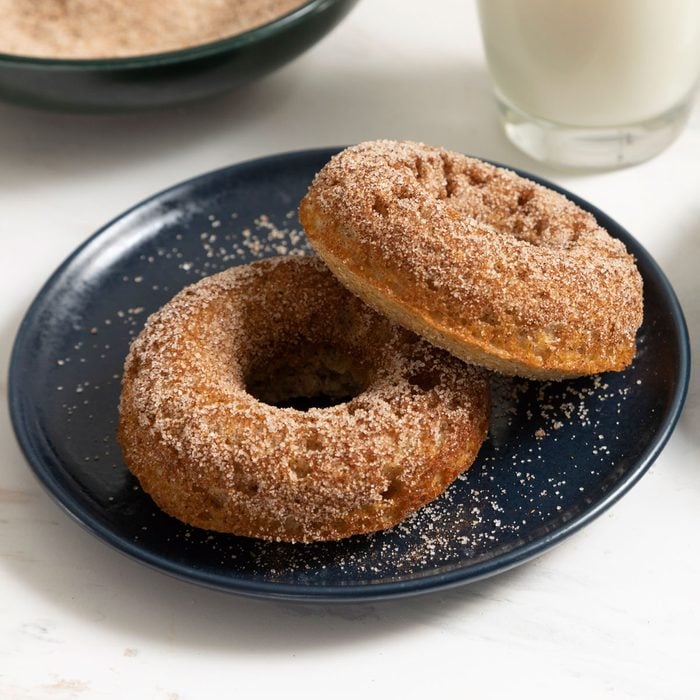
TMB Studio
Yeast Doughnuts
The majority of doughnuts start with the same base: a yeast dough. The dough rises and is usually cut into ring-shaped doughnuts, but can also be cut into whole rounds to make Hawaiian malasadas or maple bars. Yeast doughnuts have a second rise before they’re fried to produce a golden exterior with a fluffy center. They can be glazed, made into sugar doughnuts, covered in cinnamon sugar or dressed up with rainbow sprinkles.
Go to Recipe
2
/
20
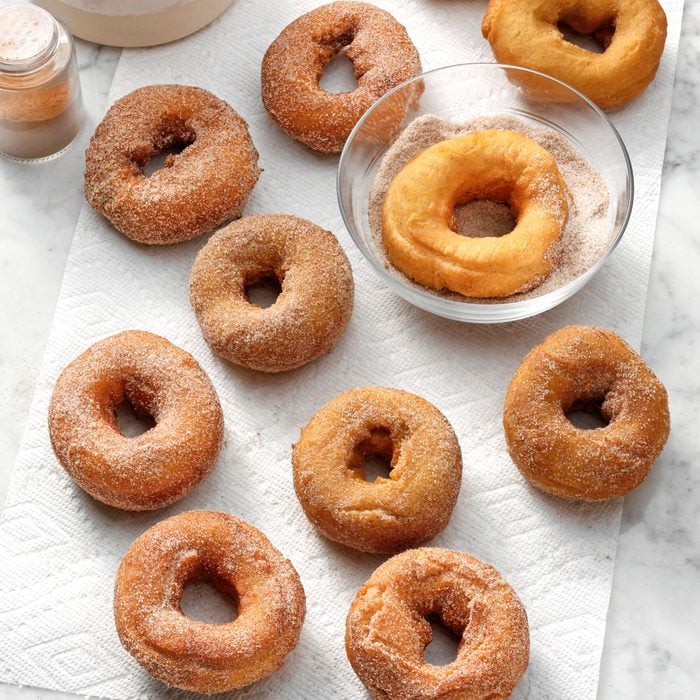
TMB Studio
Cake Doughnuts
This is one of the best options if you’re new to making doughnuts at home. The dough doesn’t rely on yeast to make the doughnuts rise—it uses baking powder instead and may be simpler to master. Once the doughnuts are fried, you’ll end up with a subtly sweet treat with a crispy exterior and soft fluffy center. Cake doughnuts are often coated in sugar, but they can be glazed if you prefer.
Go to Recipe
3
/
20
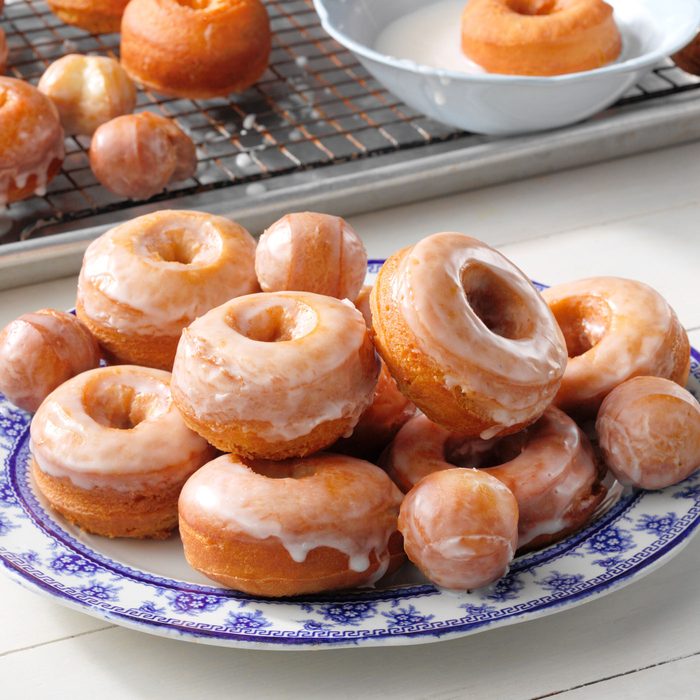
TMB Studio
Old-Fashioned Doughnuts
Old-fashioned doughnuts rely on baking powder and baking soda as leavening agents, instead of yeast. The dough also contains sour cream and buttermilk, which impart great flavor and moisture to the dough. Once the dough is kneaded and the doughnuts are cut, they can be fried. Old-fashioned doughnuts are most often topped with a simple glaze made of powdered sugar, water or half-and-half, and vanilla extract. They can also be covered in a chocolate or maple glaze.
Go to Recipe
4
/
20
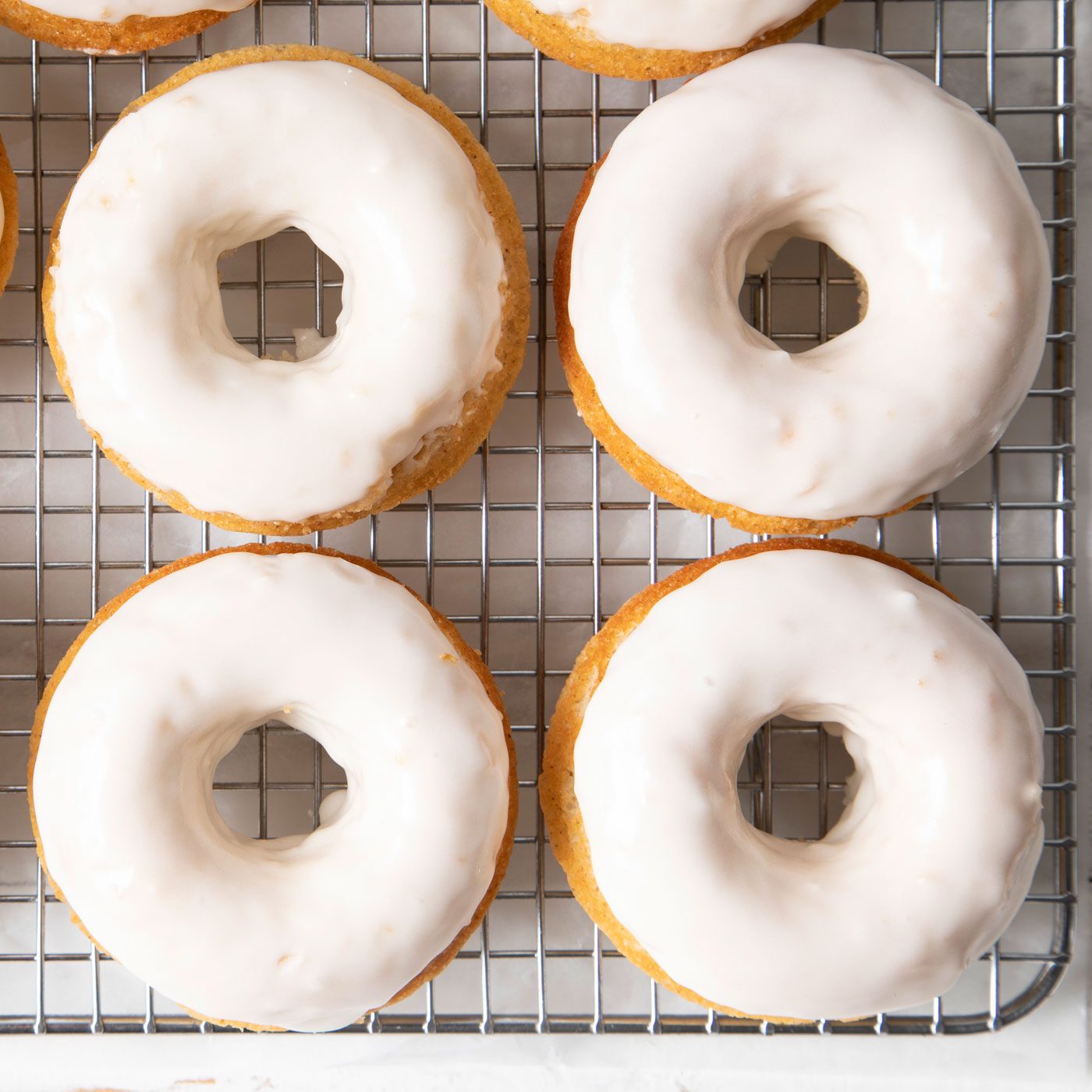
TMB Studio
Baked Doughnuts
The majority of doughnuts are deep-fried, which is what gives them a wonderful golden exterior. However, doughnuts can also be baked. Baked doughnuts use a soft dough made up of flour, sugar, baking powder, eggs, milk and melted butter which is then piped into the wells of a doughnut pan. Once they’re baked, they can be glazed, topped or tossed in sugar, as desired. This is an excellent method for making gluten-free doughnuts.
Go to Recipe
5
/
20
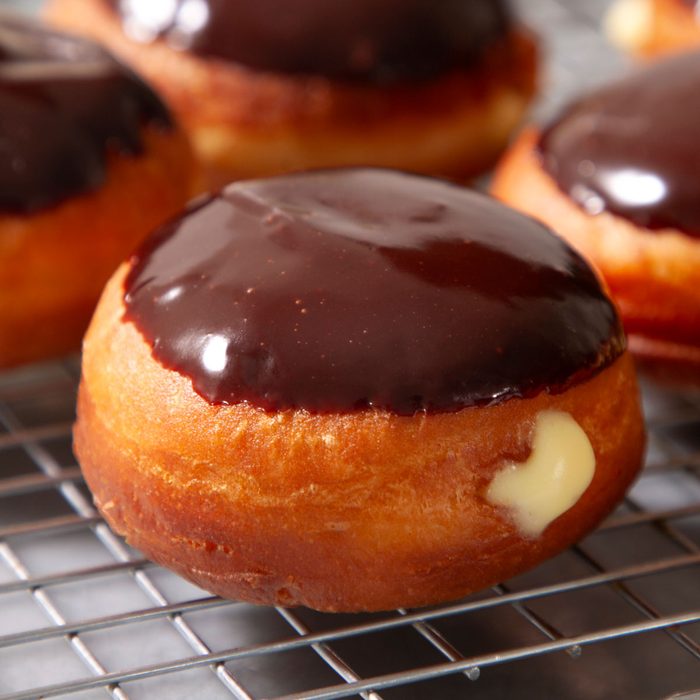
TMB Studio
Boston Cream
Some of the best sweets are inspired by other desserts, and this is true for the Boston cream doughnut. Its conception is attributed to the Parker House Hotel in Boston, after pastry chef Auguste Escoffier created a doughnut based on the flavors in a Boston cream pie. The round doughnuts are made out of a fluffy yeast dough. Once they’re fried and cooled, they’re filled with luscious pastry cream and topped with a chocolate glaze.
Go to Recipe
6
/
20
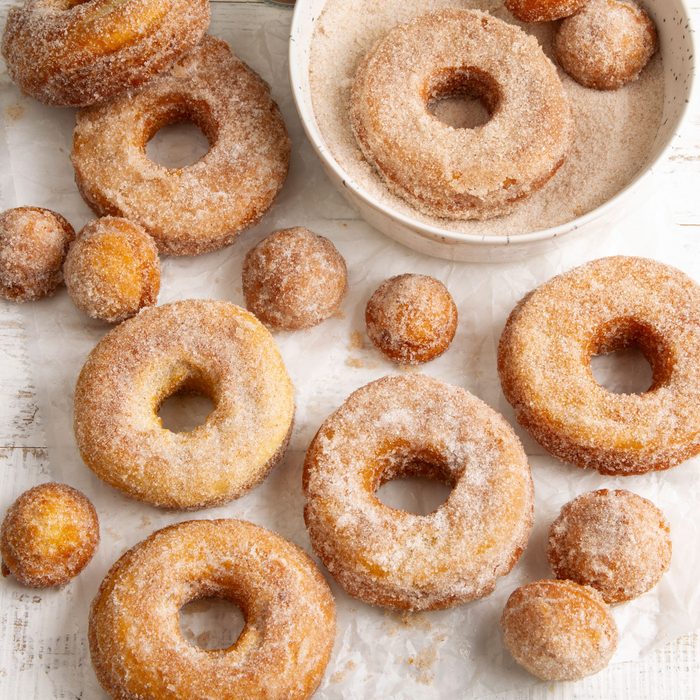
TMB Studio
Potato Doughnuts
Potato doughnuts, sometimes referred to as spudnuts, look just like traditional doughnuts. However, they have a secret ingredient in the dough: mashed potatoes. This surprising addition makes for a doughnut that’s moist and chewy on the inside but has a slight crisp texture on the outside. Once the doughnuts are fried, they can be tossed in cinnamon sugar or topped with vanilla or chocolate glaze.
Go to Recipe
7
/
20
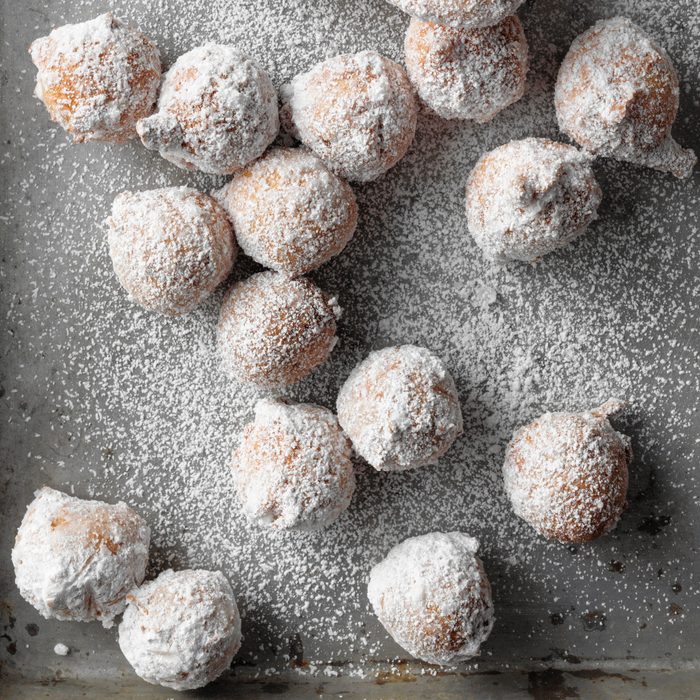
TMB Studio
Drop Doughnuts
Drop doughnuts take all the fuss out of shaping or cutting doughnuts. These little snacks are made with mashed potatoes and sour cream for a wonderfully moist texture. Instead of rolling and cutting the dough, teaspoons are simply dropped into hot oil for frying. If you don’t want to make them with mashed potatoes, try your hand at applesauce drop doughnuts or pumpkin doughnut drops instead. Greek Loukoumades are another type of bite-sized drop doughnut made using a drop method.
Go to Recipe
8
/
20
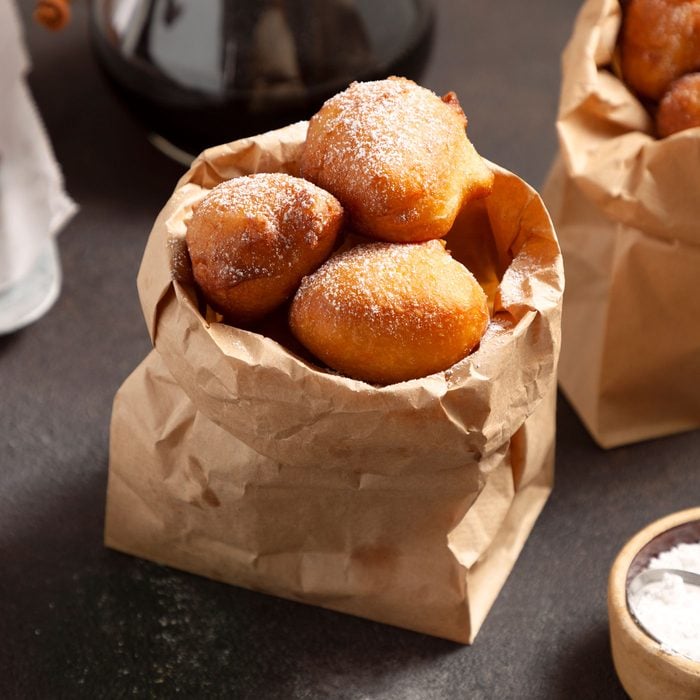
TMB Studio
Zeppole
These Italian doughnut holes are perfectly bite-sized. They’re made with a yeasted dough which doubles in size while proofing. Once the dough is ready, tablespoon-sized pieces are dropped into hot oil to produce pillows of golden fried dough. Zeppole are most often rolled in powdered sugar, cinnamon sugar or granulated sugar. They can also be served with a dipping sauce such as chocolate sauce or lemon curd.
Go to Recipe
9
/
20
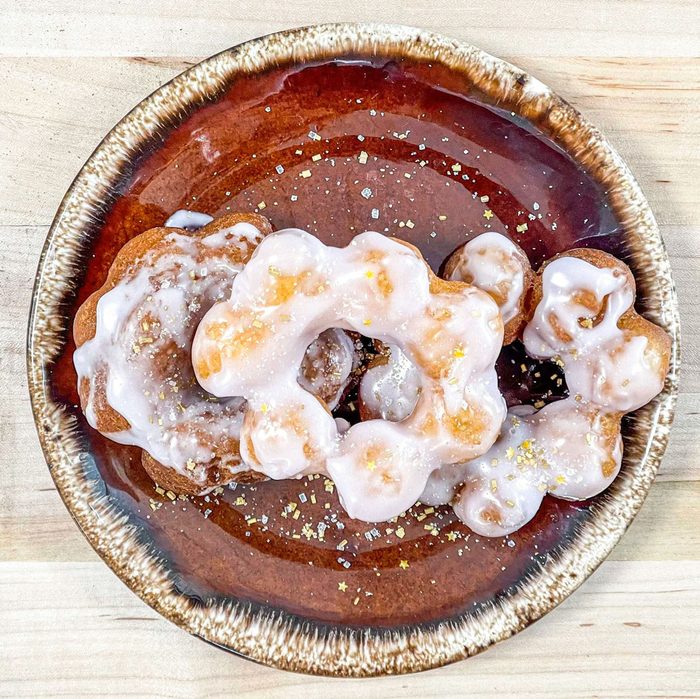
Suzanne Podhaizer for Taste of Home
Mochi Doughnuts
Mochi doughnuts are a ring-shaped dessert that relies on sweet rice flour, or mochiko, in the dough. The dough uses baking powder as a leavening agent to produce a chewy doughnut. Once the dough is piped into rings on parchment paper, they are individually fried until golden. Mochi doughnuts are often finished with a flavored glaze including vanilla, chocolate or a glaze made with matcha tea powder.
Go to Recipe
10
/
20
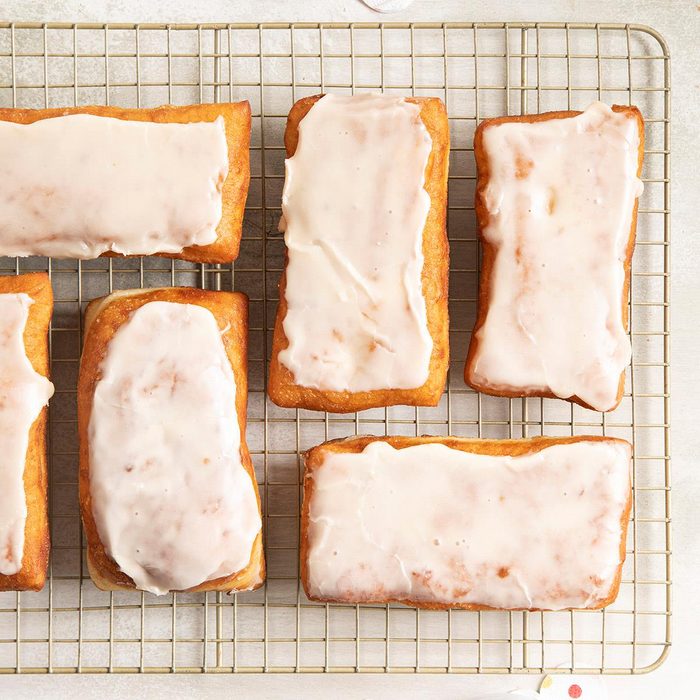
TMB Studio
Long Johns
Long john doughnuts are a yeast doughnut cut into a bar shape. But once they’re shaped from a yeasted dough and fried, they can be customized to create maple bars, chocolate long johns or any other flavor. They might be glazed with vanilla, chocolate or maple or filled with pastry cream or jelly filling and some are even topped with crushed nuts, shredded coconut or sprinkles.
Go to Recipe
11
/
20
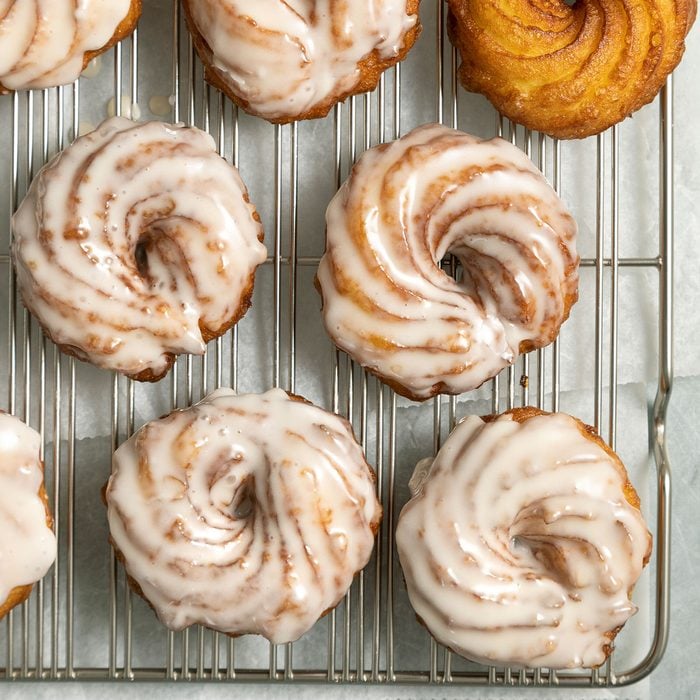
TMB Studio
French Crullers
French crullers are made from a different type of dough from a yeast doughnut or old-fashioned doughnut. Instead, they’re prepared with choux pastry, or pâte à choux, which relies on a cooked flour mixture and eggs to create the batter-like dough. Once the choux pastry is ready, it’s piped into a circular shape on squares of parchment paper. Each cruller is then fried and glazed to create a treat with a delicate texture and a touch of sweetness.
Go to Recipe
12
/
20
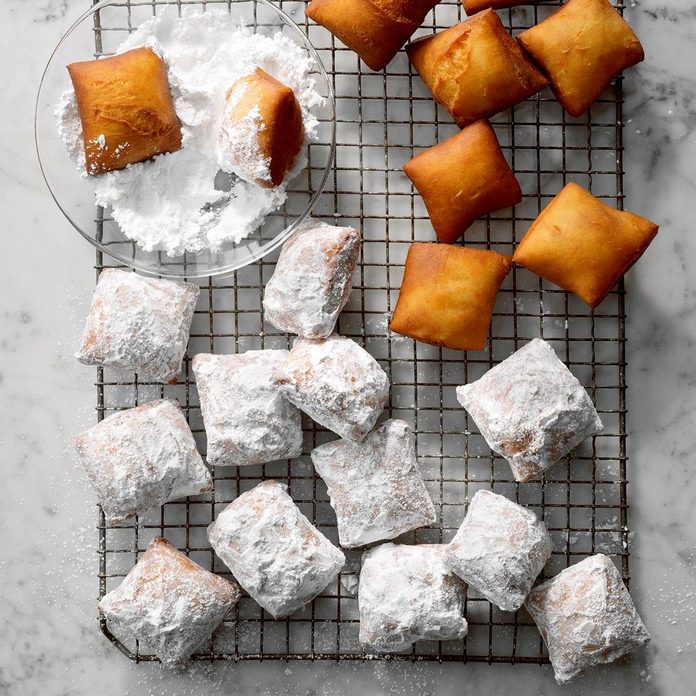
TMB Studio
Beignets
Not many states have an official state doughnut, but Louisiana does. The little French pastries, which were made especially popular by Café du Monde in New Orleans, are made out of a yeasted dough. The dough is rolled out, cut into squares and fried in hot oil. The crisp little treats with a fluffy center are tossed in powdered sugar before serving. You can also try a spin on this French classic by making banana beignet bites.
Go to Recipe
13
/
20
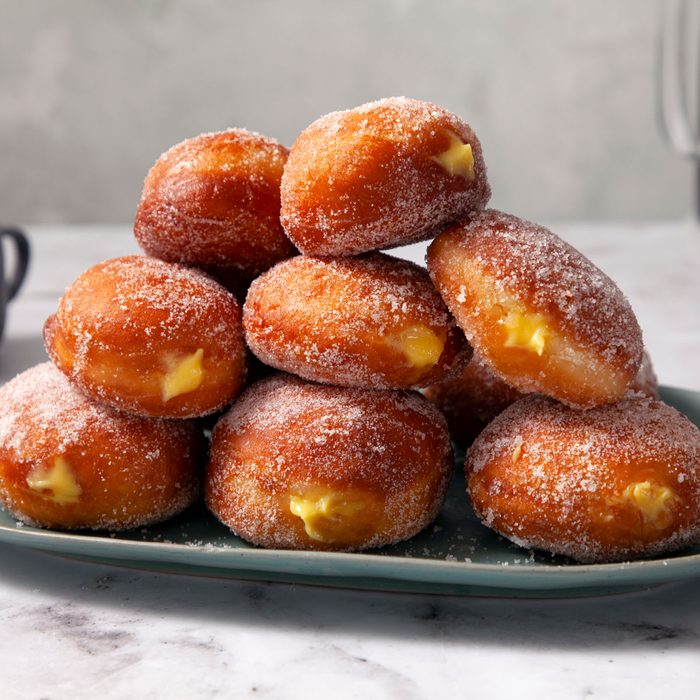
TMB Studio
Filled Doughnuts
Filled doughnuts are made using a yeast dough, so they’re golden on the outside and fluffy on the inside. Even better, when you bite into a filled doughnut, you’ll find cream in the center! The cream filling might be a simple vanilla frosting, or flavored pastry cream made with cocoa powder, lemon, berries or espresso powder. These treats are most often coated in granulated sugar, but the tops could also be glazed with vanilla or chocolate.
Go to Recipe
14
/
20
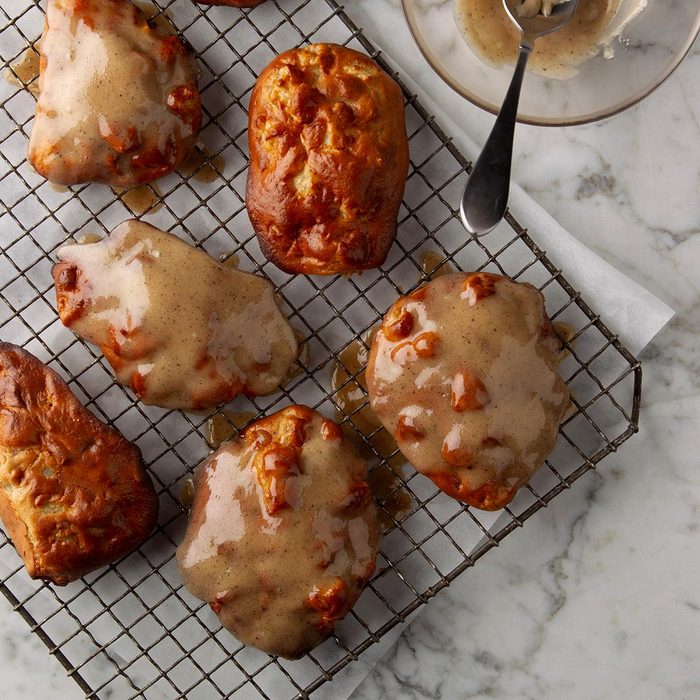
TMB Studio
Fritters
Apple fritters are certainly the most popular type of fritter, but these doughnuts can also be made with peaches or pears. This recipe starts with a baking powder-based dough, similar to a cake doughnut. Chunks of apples are folded into the dough before the doughnuts are fried and glazed. Some fritters are made by incorporating chunks of fruit into a yeast doughnut dough instead.
Go to Recipe
15
/
20
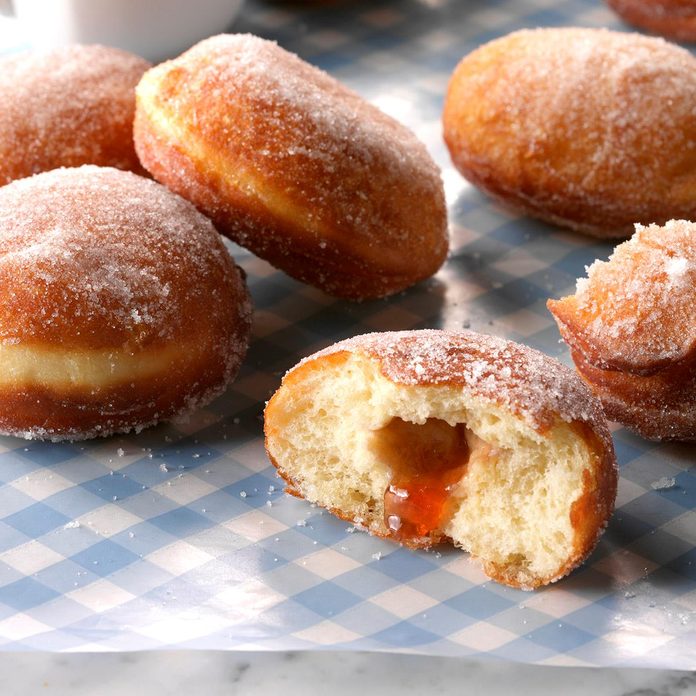
TMB Studio
Jelly Doughnut
For some doughnut lovers, it’s not the perfect treat without a jelly filling. Jelly doughnuts start with a yeast doughnut base and are cut into whole rounds. Paczki is a type of jelly doughnut that uses shortening in the dough, while sufganiyot uses whole wheat flour and honey. Depending on the recipe and method, two pieces of dough may be filled with jelly or jam before the doughnut is fried. Others rely on a pastry bag to fill the cooked doughnut with jelly or jam. Either way, you’ll end up with a fluffy doughnut and a pop of flavor from raspberry, strawberry or apricot preserves in the center.
Go to Recipe
16
/
20
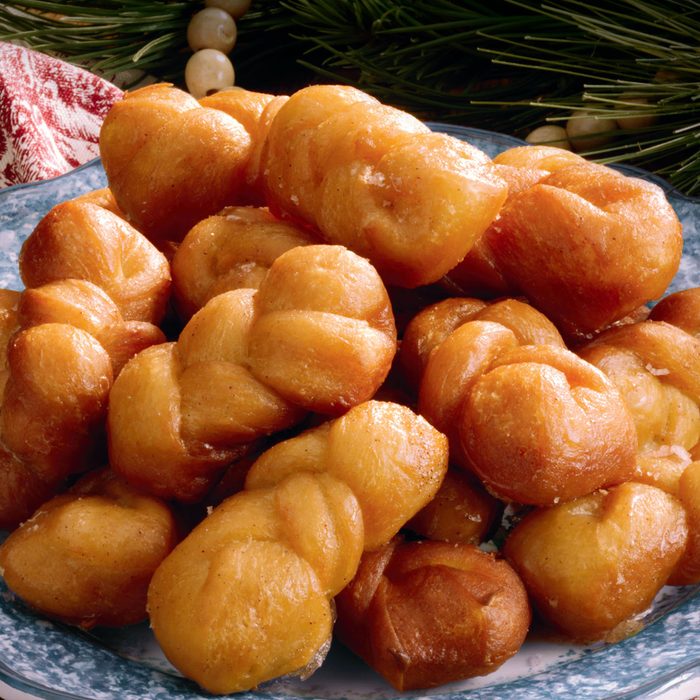
TMB Studio
Cinnamon Twists
Want a larger doughnut that’s different than the classic round shape? Put cinnamon twists on the menu! These doughnuts are made from a yeast dough with brown sugar and nutmeg to produce a fluffy, flavorful treat. Sections of dough are braided to form the twisted shape before the doughnuts are fried until golden. To finish them off, they’re glazed with a simple topping made up of sugar, water and cinnamon.
Go to Recipe
17
/
20
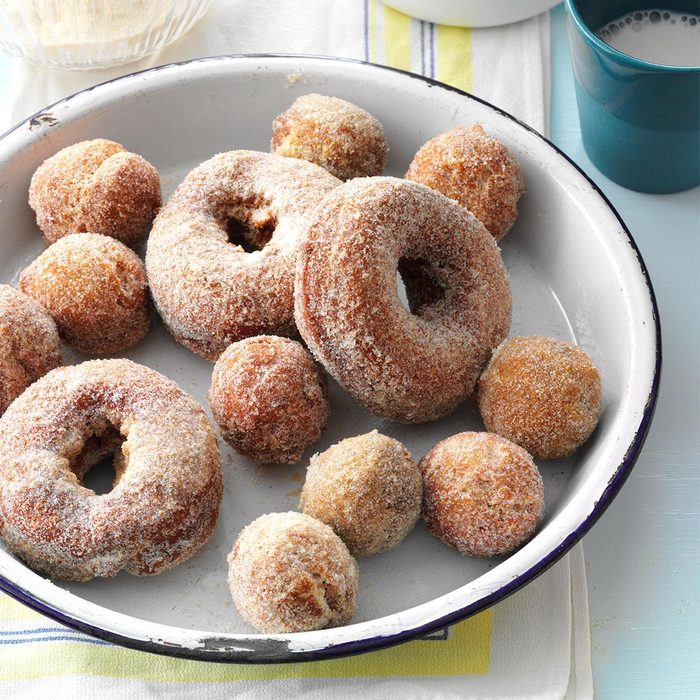
TMB Studio
Apple Cider Doughnuts
For many people, it’s not a trip to the apple orchard or pumpkin patch without an apple cider doughnut. These doughnuts are made similarly to old-fashioned cake doughnuts, relying on baking powder as a leavening agent rather than yeast. Reduced apple cider is added to the dough, giving the doughnuts great flavor and a moist texture. Once fried, they’re tossed in cinnamon sugar or dressed up with maple glaze.
Go to Recipe
18
/
20
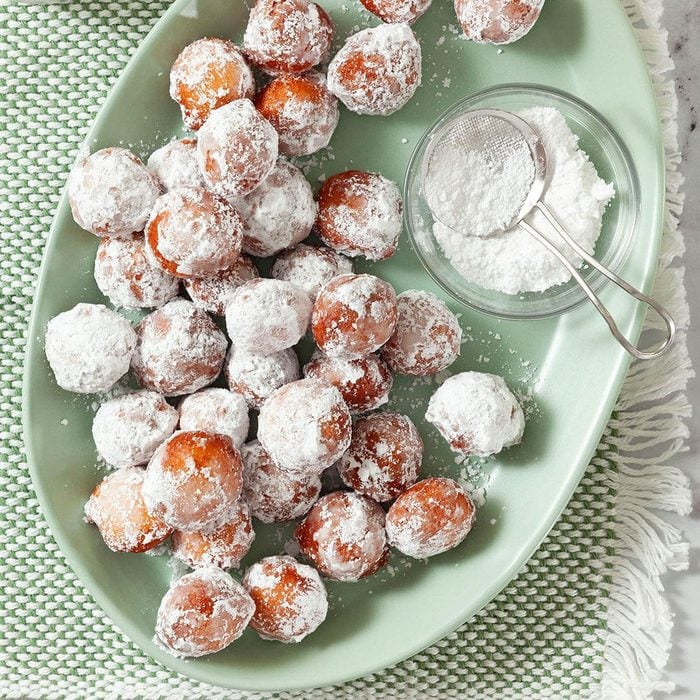
TMB Studio
Doughnut Holes
If you have leftover dough scraps from making doughnuts, or simply want bite-sized treats, doughnut holes are the perfect solution. Doughnut holes are small balls of dough that have been fried and finished with a topping. They can either be glazed, rolled in powdered sugar, cinnamon sugar, white sugar or even decorated with sprinkles. Depending on the dough, some doughnut holes may also be baked.
Go to Recipe
19
/
20
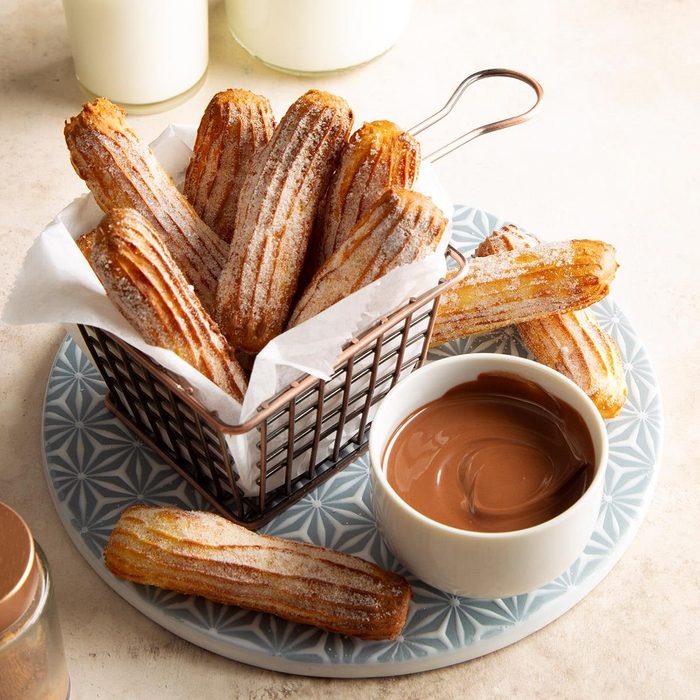
TMB Studio
Churros
Like French crullers count as doughnuts, so do churros. This popular Spanish treat is made with a choux pastry dough. Once the choux pastry is ready, it’s piped into strips before being fried to produce a crunchy golden treat. Churros are most often covered in cinnamon sugar or plain granulated sugar and served with caramel or chocolate sauce for dipping.
Go to Recipe
20
/
20
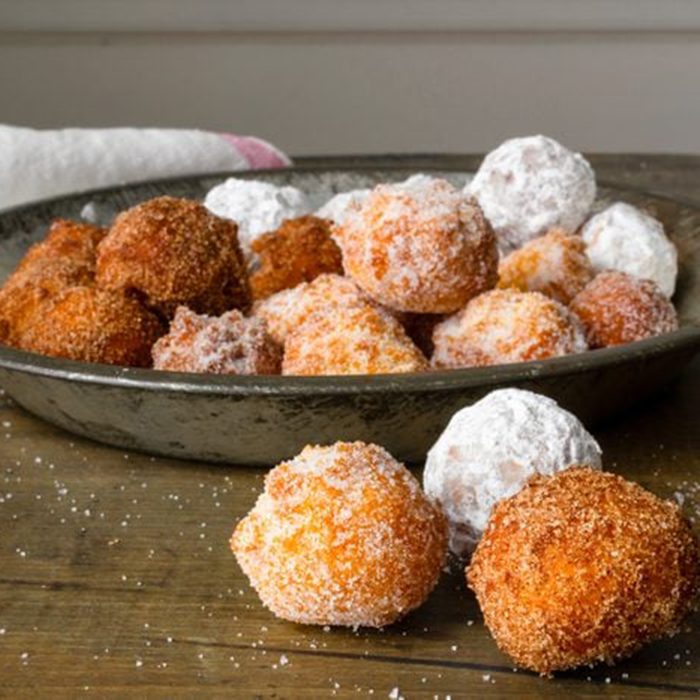
NANCY MOCK FOR TASTE OF HOME
Bonuts
If you combine the idea of a biscuit with a doughnut, you get bonuts. These bite-sized snacks are made with a buttermilk biscuit dough, which is formed into small balls and fried. The tender little doughnuts are dressed up with a touch of sweetness thanks to powdered sugar, cinnamon sugar or any other topping you may choose. Another clever cross between treats? Cronuts are the perfect cross between a doughnut and a croissant, producing a golden sweet treat with flaky layers.
Go to Recipe
Originally Published: January 22, 2024
>>> Read full article>>>
Copyright for syndicated content belongs to the linked Source : TasteOfHome – https://www.tasteofhome.com/collection/types-of-donuts/





























